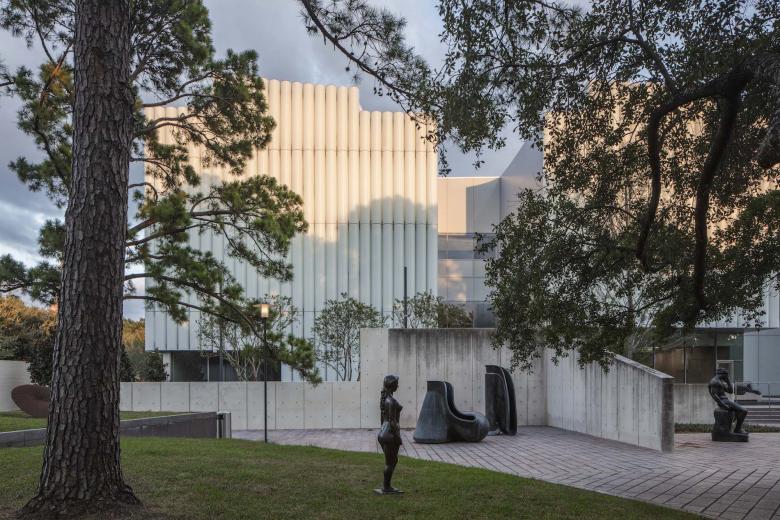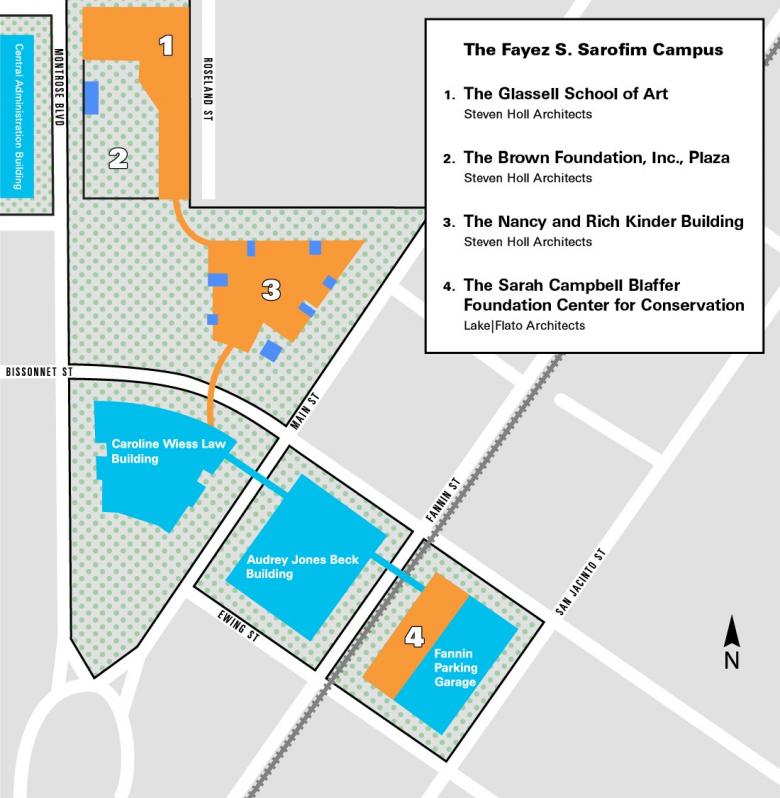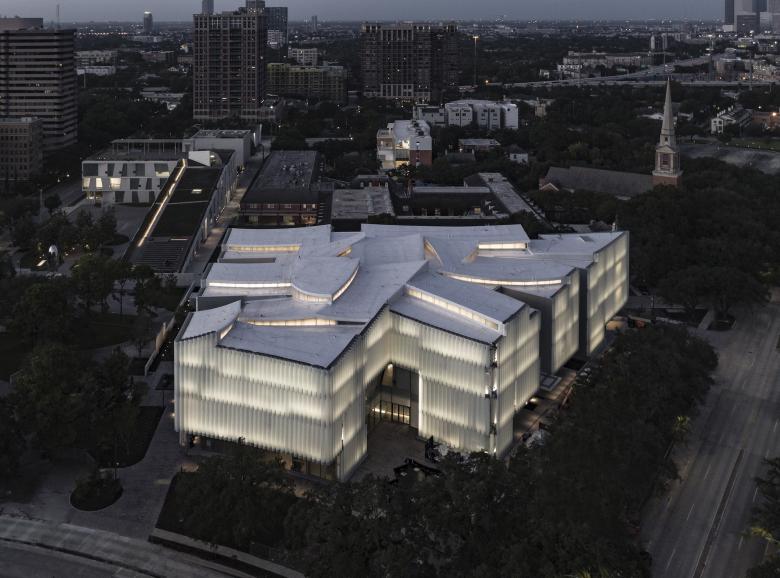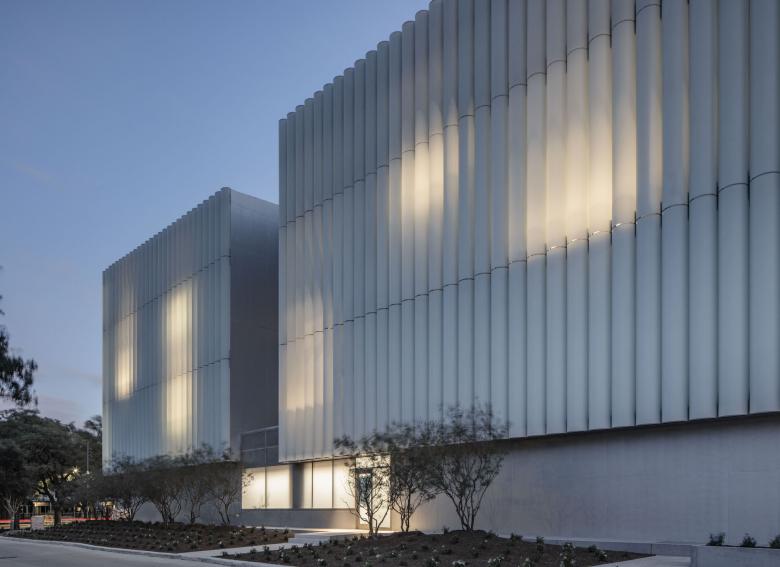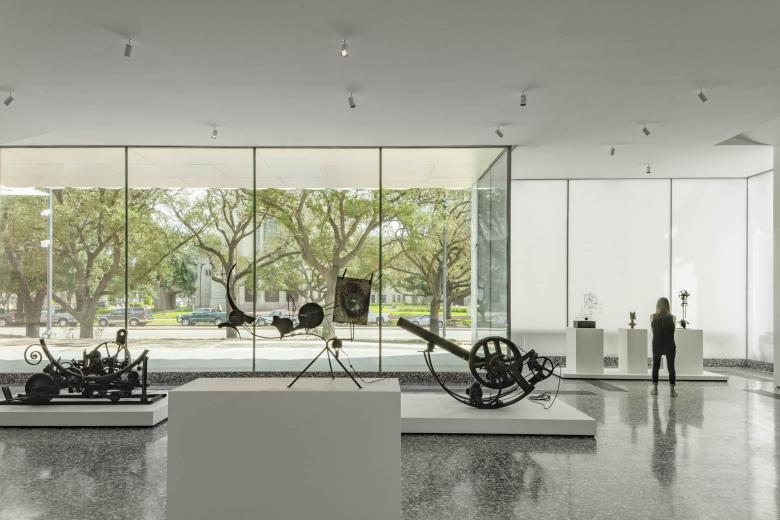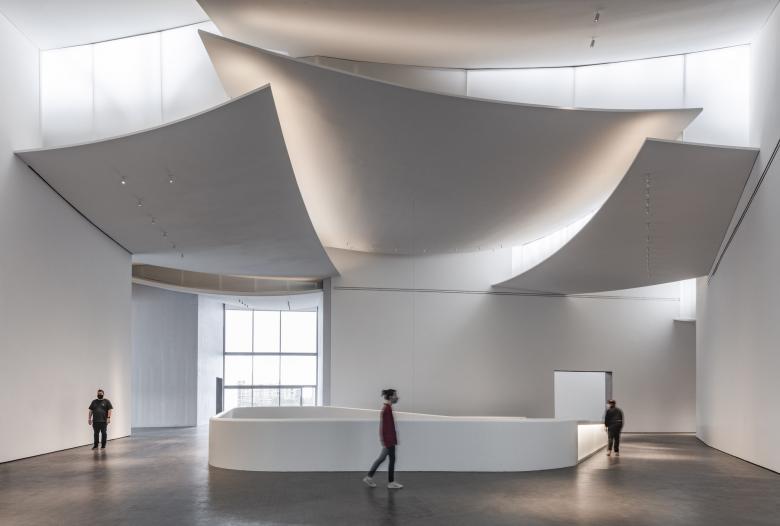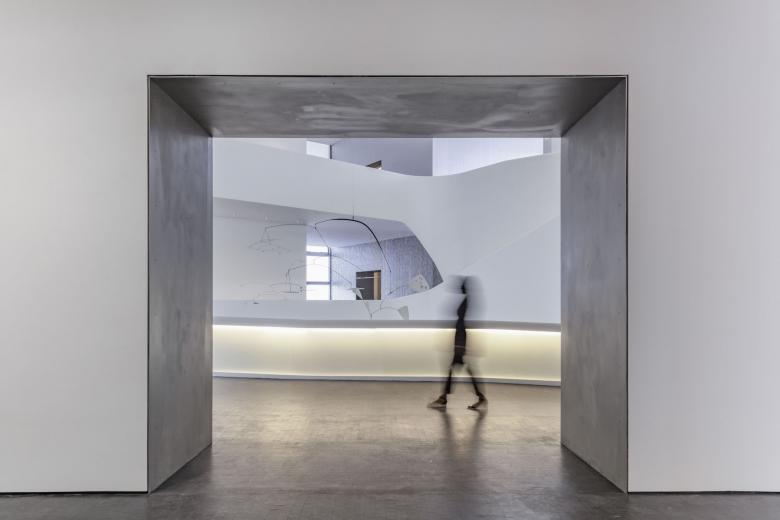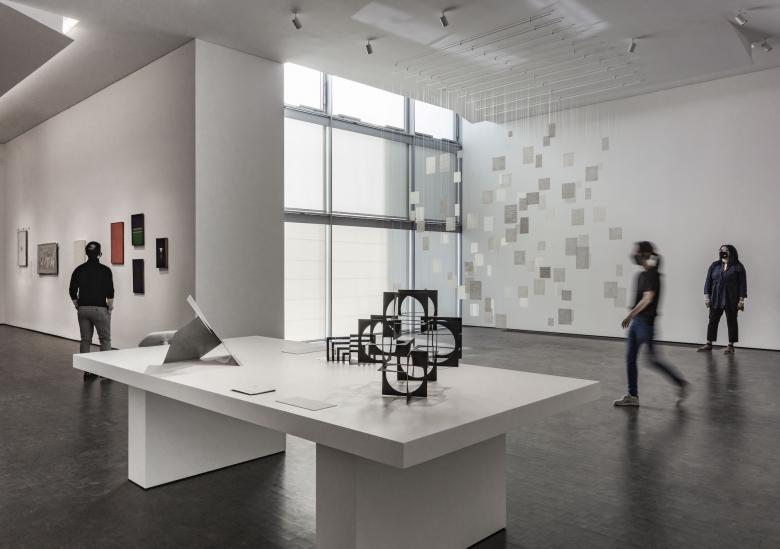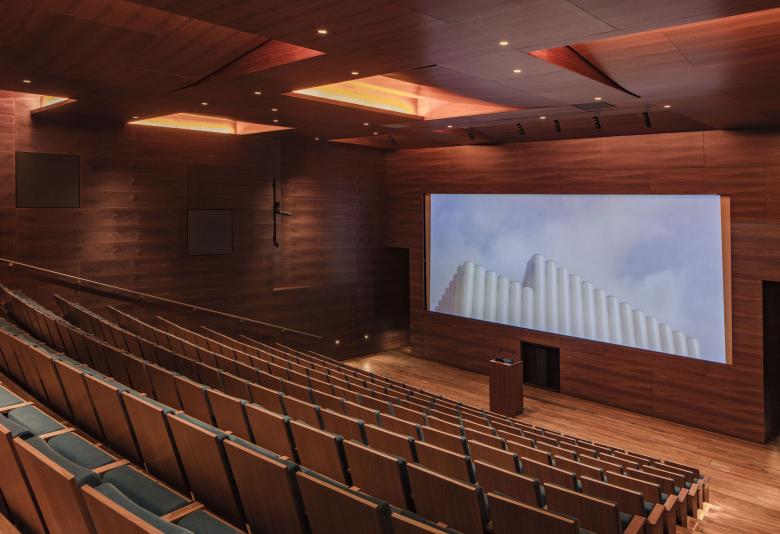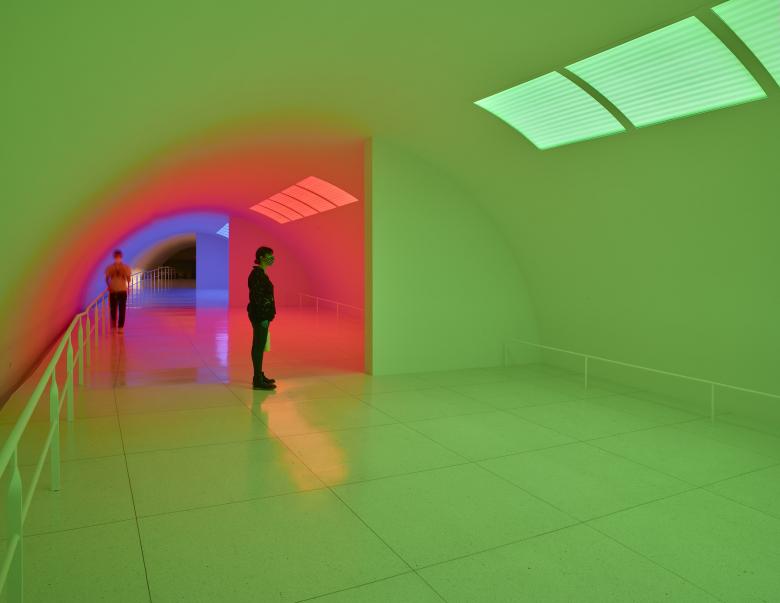New Holl Building Opens at MFAH
John Hill
18. November 2020
The Nancy and Rich Kinder Building as seen from the Museum of Fine Arts, Houston’s sculpture garden. (Photo © Richard Barnes, courtesy of the Museum of Fine Arts, Houston)
The Nancy and Rich Kinder Building at the Museum of Fine Arts, Houston opens on November 21. Designed by Steven Holl Architects, the building completes a campus masterplan a decade in the making.
The Nancy and Rich Kinder Building is the third gallery building at MFAH and the last of five buildings with underground connections spanning the four blocks of its Fayez S. Sarofim Campus. Steven Holl Architects was selected in January 2012 to develop the masterplan for the 14-acre campus, which added three buildings with exhibition spaces, educational facilities, and a state-of-the-art conservation center. The museum's collection of patron-named buildings is listed here and illustrated in the below site plan:
- Caroline Weiss Law Building: William Ward Watkin (1924), extended twice by Ludwig Mies van der Rohe (1958/1974)
- Audrey Jones Beck Building: Rafael Moneo (2000)
- Glassell School of Art: Steven Holl Architects (2018)
- Sarah Campbell Blaffer Foundation Center for Conservation: Lake|Flato Architects (2018)
- Nancy and Rich Kinder Building: Steven Holl Architects (2020)
The campus also includes the Lillie and Hugh Roy Cullen Sculpture Garden (1986), designed by Isamu Noguchi and the Brown Foundation, Inc. Plaza by Nevins & Benito Landscape Architecture, which is next to both the Noguchi sculpture garden and the Glassell School of Art.
MFAH Campus site plan, with yellow buildings added as part of the 2012 masterplan. (Drawing courtesy of MFAH)
The Nancy and Rich Kinder Building at the Museum of Fine Arts, Houston, from above. (Photo © Richard Barnes, courtesy of the Museum of Fine Arts, Houston)
The three-story, 237,000-sf Kinder Building includes more than 100,000 square feet of gallery space devoted to the presentation of modern and contemporary art from MFAH's collection. The building also has a 215-seat theater, two levels of underground parking, pedestrian tunnels connected to the Glassell and Law buildings, and a café and restaurant overlooking a sculpture garden that will open next year.
The large steel-and-concrete building is clad in translucent glass, but it is not the channel glass Steven Holl is known for (as in the Nelson-Atkins Museum of Art Bloch Building in Kansas City or the recently completed Winter Visual Arts Building at Franklin & Marshall). The "cool jacket" wrapping the Kinder Building is made up of arced glass half tubes that give the exterior a noticeably soft texture that is meant to stand out from the preceding gallery buildings by Mies and Moneo.
The Nancy and Rich Kinder Building at the Museum of Fine Arts, Houston, north facade. (Photo © Richard Barnes, courtesy of the Museum of Fine Arts, Houston)
The Nancy and Rich Kinder Building at the Museum of Fine Arts, Houston, street-level gallery with works by Jean Tinguely. (Photo © Richard Barnes, courtesy of the Museum of Fine Arts, Houston)
As can be seen in the aerial and plan above, the perimeter of the trapezoidal Kinder Building is cut by five "porous gardens" where reflecting pools are located. These "cuts" rise up through the building to define the footprint of the galleries that surround the three-story atrium at the center of the plan. The roof is described as a "luminous canopy" with concave curves that reference the "billowing clouds of the Texas sky" and help bring natural light into the atrium.
The Nancy and Rich Kinder Building at the Museum of Fine Arts, Houston, third-floor atrium. (Photo © Richard Barnes, courtesy of the Museum of Fine Arts, Houston)
View of the atrium from a gallery in the new Nancy and Rich Kinder Building at the Museum of Fine Arts, Houston. (Photo © Richard Barnes, courtesy of the Museum of Fine Arts, Houston)
The Latin American department galleries in the new Nancy and Rich Kinder Building at the Museum of Fine Arts, Houston. (Photo © Richard Barnes, courtesy of the Museum of Fine Arts, Houston)
The interior space are mainly shades of white and gray, with honed concrete and terrazzo, though differences are found in the wood-lined theater and the two pedestrian tunnels. The latter features site-specific artworks by Ólafur Elíasson (Sometimes an underground movement is an illuminated bridge, connecting to the Glassell School of Art) and Carlos Cruz-Diez (Cromosaturación MFAH, connecting to the Caroline Weiss Law Building). These artistic contributions are two of eight site-specific artworks commissioned by MFAH for its brand new building.
The Lynn Wyatt Theater on the lower level of the Nancy and Rich Kinder Building at the Museum of Fine Arts, Houston. (Photo © Richard Barnes, courtesy of the Museum of Fine Arts, Houston)
Installation view of Carlos Cruz-Diez’s Cromosaturación MFAH, Paris 1965 / Houston 2017. (Photo by Thomas Dubrock, courtesy of the Museum of Fine Arts, Houston)
Related articles
-
New Holl Building Opens at MFAH
on 11/18/20
-
Glassell School of Art, MFAH
on 5/15/18
-
MFAH's $450M Expansion
on 1/13/15
